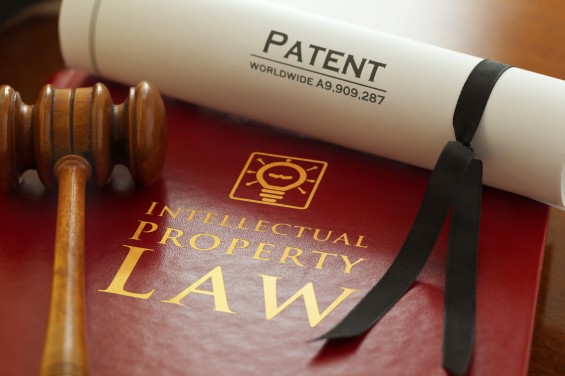As fall Fridays go, the one last week was pretty eventful, at least for patent types. While I will let the proverbial dust settle for a bit on the big news out of the USPTO regarding changes to the IPR scheme, there is no doubt that seismic change is afoot. The fallout promises to impact everyone up and down the patent ecosystem’s food chain, from patent owners, to defendants, and the entire universe of vendors, funders, and counsel that has been developed over the past decade to deal with parallel litigation in patent cases between district courts and the USPTO’s PTAB. But there will be plenty of time to see what changes going forward, even as the heads of many have already been spinning for much of this year based on the implementation of a more robust discretionary denial gauntlet for IPR petitioners to navigate through. Instead, it is worthwhile to use this week’s column to discuss another of Friday’s developments, a Federal Circuit precedential opinion that provides a potent reminder of the importance of patent owners and their counsel watching their words — at least if they want to avoid limiting their patent scope and value via prosecution disclaimer.
The case in question, Barrette Outdoor v. Fortress Iron, came to the Federal Circuit out of the Northern District of Texas after a claim construction ruling that the plaintiff agreed made it impossible to prove their case of infringement. As a result of that stipulation, the district court entered a final judgment of no infringement of any of Barrette’s four asserted patents, with Barrette appealing that judgment to the Federal Circuit. Unsurprisingly, the defendants cross-appealed to push forward their rejected indefiniteness defense, because nothing is sweeter than getting out of a patent case for a defendant than killing the patents that had caused the trouble to begin with. On appeal, the panel concluded that the district court was right in entering judgment of noninfringement, and rejected the cross-appeal that the patents were indefinite. A win for the defendant, but at least the patents survive for the plaintiff to continue playing with. (As always, for those interested in a learned analysis of the opinion, I commend Prof. Crouch’s write-up on Patently-O, available in full to subscribers of his worthy publication.) For our purposes, the salient question is why the Federal Circuit chose to make this dispute over lawn fence technology the basis for a precedential opinion. The short answer is that claim construction as a matter of law is always important – and likely to generate precedential guidance that governs future similar proceedings.
Let’s go a bit deeper to try and tease out what guidance the panel is offering to us going forward. To start, all of the asserted patents “share a common specification and parent application,” which “describes a fencing assembly featuring pivoting, sliding connectors that connect pickets to rails.” At the heart of the inventions was an improved connector that offered advantages over the prior art fencing assembly methods previously available. After getting a few patents issued, Barrette’s continuing prosecution efforts hit a roadblock when an examiner found a prior art reference that allegedly disclosed Barrette’s connector. As a result, Barrette tried to distinguish over that reference, before cutting bait and substituting in narrower claims that led to another patent issuance when that effort failed. Eventually, Barrette identified what it thought was infringement by the defendants and filed suit.
The case went to a claim construction hearing, where Barrette argued for broad constructions of the disputed patent claims. In response, the defendants argued that the claims were indefinite with respect to “the sliding terms” while also arguing that the “term “boss” should be construed as limited to integral, fastener-less structures.” And because the parties agreed “ that the terms ‘boss,’ ‘projection,’ and ‘nub’ are used interchangeably,” once the district court “ limited the “boss” terms to integral structures by distinguishing the “claimed integral bosses” from the “conventional pivot hole and pivot pin assembly” disclosed” in the prior art, it was game over for Barrette’s infringement case. On appeal, the Federal Circuit agreed that the district court got some elements of claim construction wrong, but refused to disturb the construction limiting “boss” to “integral structures” based on the disclaimer over the prior art in prosecution. Accordingly, the judgment of noninfringement was affirmed.
In doing so, the panel rejected Barrette’s argument that its alleged prosecution disclaimer could not apply to earlier issued patents than the patent in which the alleged disclaimers were made. In the panel’s view the situation presented here was one where the disclaimer clarifying a more limited claim scope was clear — with Barrette’s argument really one that “subsequent communications with the patent office rendered any purported disclaimer ambiguous.” In light of that posture, the panel found that the “prosecution history would not suggest to a reasonable reader that Barrette’s narrowing characterization of its claims was incorrect.” Nor could Barrette’s cancellation of the claims at issue prevent the disclaimer because Barrette never rescinded the disclaimer before the examiner. Finally, just because the disclaimer was made in a later-issued patent’s prosecution was not enough to save it from applying to earlier familiar members, based on earlier Federal Circuit precedent that when terms are shared across patents, statements about the scope of those terms apply, “regardless of whether the statement pre- or post-dates the issuance of the particular patent at issue.”
Ultimately, the Barrette decision confirms the importance of considering the prosecution history of all related patents when determining how best to assert or defend against a patent infringement claim at the claim construction stage. In a way, it reminds us that a patent owner’s statements about the scope of its patents must always be considered carefully – with narrowing statements deserving of extreme scrutiny by patent owners before they are made if at all possible. Conversely, defendants must make sure that they scour the prosecution histories of related patents to find any limiting statements that can apply to common terms. More work for everyone, but an important reminder to all involved of the importance of watching one’s words.
Please feel free to send comments or questions to me at gkroub@kskiplaw.com or via Twitter: @gkroub. Any topic suggestions or thoughts are most welcome.
Gaston Kroub lives in Brooklyn and is a founding partner of Kroub, Silbersher & Kolmykov PLLC, an intellectual property litigation boutique, and Markman Advisors LLC, a leading consultancy on patent issues for the investment community. Gaston’s practice focuses on intellectual property litigation and related counseling, with a strong focus on patent matters. You can reach him at gkroub@kskiplaw.com or follow him on Twitter: @gkroub.
The post Watch Your Words appeared first on Above the Law.

